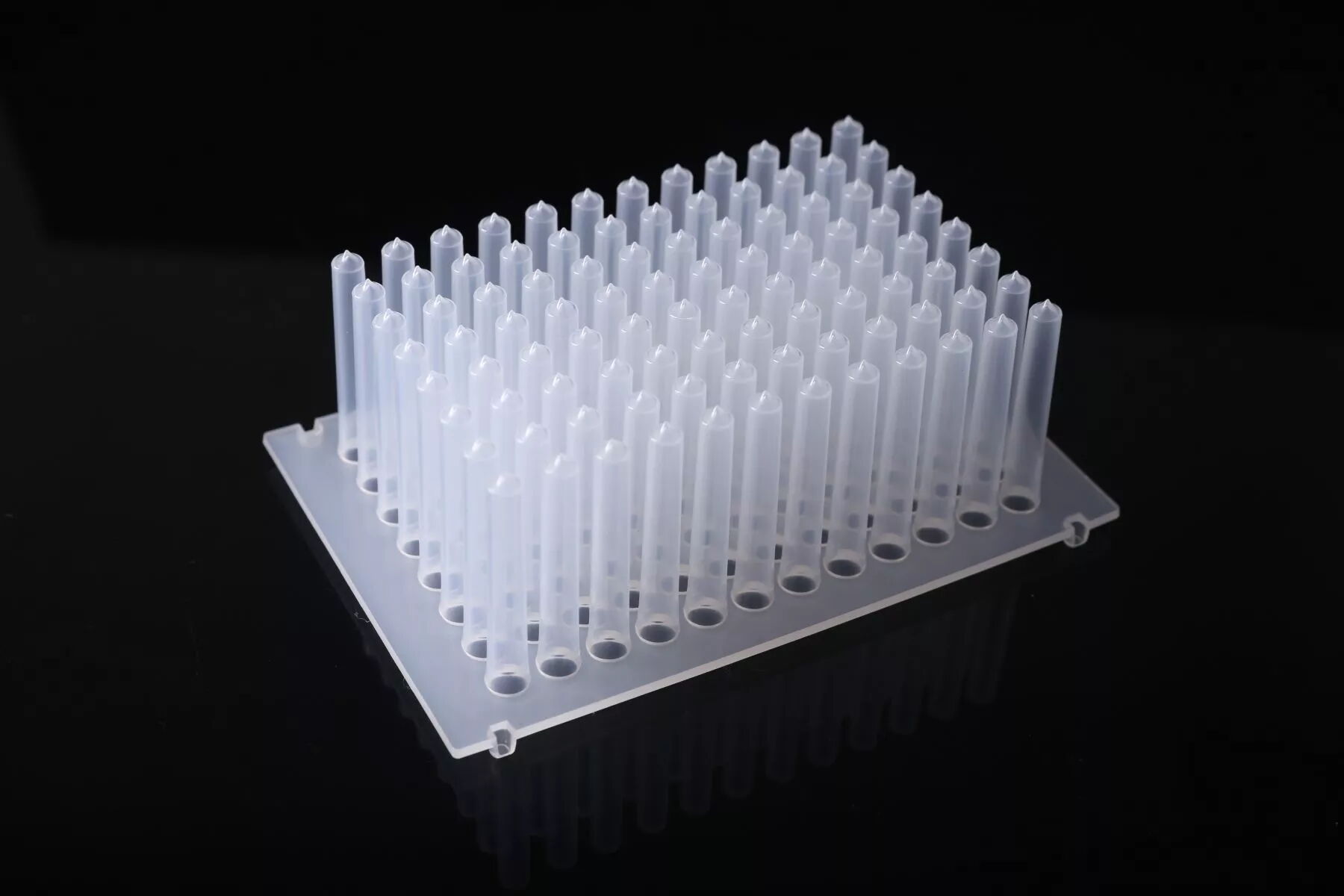Why is Balancing Centrifuges Important?
Aug 15, 2024
On this page
Centrifuge is an indispensable equipment in the laboratory, its core component is a rotor driven by a central motor, which drives the rotor containing the sample tube to rotate at high speed. The centrifugal force generated during rotation accelerates the settling of particles in the sample, making the centrifuge an ideal tool for separating suspended particles of different sizes and densities.
When centrifuges are designed to hold test tubes with a capacity of 2 ml or less, they are often referred to as microcentrifuges. Such devices are optimized for processing tiny samples, while those capable of producing extremely high centrifugal forces (up to 1,000,000 g) are called ultracentrients and are often used for ultra-high speed separation tasks. Centrifugal tubes are laboratory consumables designed to hold liquids during the centrifugation process. They typically have a conical bottom and are available in a variety of materials and sizes to ensure they can be adapted to a wide range of experimental needs. Test tubes with a capacity of 2 ml or less are often referred to as microcentrifuge tubes and are particularly common when dealing with trace samples. The principle of centrifuge operation determines that in the process of thousands of rotations per minute, even the smallest weight imbalance around the rotor will be rapidly amplified. This imbalance can cause the instrument to vibrate or shake, which will not only affect its performance and reliability, but also shorten its service life. In extreme cases, a severe imbalance can even cause a centrifuge to explode, posing a serious safety threat to laboratory workers. Ensuring the correct balance of the centrifuge is a crucial step in the use process. If you are using a portable table centrifuge, you first need to place the device on a level and stable surface. Next, you need to load the test tubes according to certain rules to keep the center of gravity in the center of the rotor. Different types of instruments and the number of test tubes require different balancing methods, which are as follows:
When loading a centrifuge with a fixed Angle rotor, the test tubes should be placed in pairs and ensure that these opposite test tubes are of equal mass, which means that they should hold the same volume of samples. If the number of tubes is odd, a "balance tube" needs to be added on the opposite side of the single sample tube. The balanced tube can be filled with water to save reagents, but it must be ensured that its quality is the same as that of the opposite sample tube. Another way to balance an odd number of tubes is to space them evenly around the rotor to maintain the balance of the center of gravity. When loading a centrifuge with oscillating bucket rotors, first make sure that all rotor locations are equipped with buckets, even buckets that do not require sample loading. If the equipment is run without a bucket, it may cause damage to the rotor. In addition, when loading the pipe into the bucket, it is necessary to ensure that the opposite bucket is loaded symmetrically to avoid imbalance during rotation. Most importantly, each bucket must be balanced on its pivot. If this is not possible with the number of sample tubes, you can use a "balance tube" to help balance the load. There is no doubt that the centrifugal tube is the consumable that needs to withstand the greatest centrifugal force in the laboratory. Therefore, when choosing the right centrifuge tube for your needs, there are several key factors to consider in order to avoid costly and time-consuming overflow accidents in the centrifuge. Pipe manufacturers usually indicate the maximum relative centrifugal force (RCF) that each pipe can withstand. Since the price of different types of tubes can vary depending on their RCF values, before purchasing, you should first understand the centrifugal forces required for your workflow and then choose a tube that can withstand these forces. Centrifugal tubes not only need to withstand centrifugal forces, but also need to withstand the chemicals in the sample, so when choosing a tube, you should check the chemical resistance of its material to ensure that it is suitable for your experimental process. Common pipe materials include polypropylene (PP), polyethylene terephthalate (PET) and glass, and different materials have different chemical tolerances. Whether the centrifugal tube can be autoclave depends on its material. For example, tubes made of glass, PP or PA materials can usually be autoclaved, while PET tubes cannot. Although PC tubes can also be autoclaved, repeated sterilization weakens the strength of the material and shortens its service life. The ideal test tube size should match the volume of the sample. In general, the tube should be filled at least ¾ to avoid excessive material stress, thereby reducing the risk of tube failure. Some tubes even need to be completely filled. When choosing the tube size, it is recommended to check the specifications provided by the manufacturer. If the test tube you need is too small for your centrifuge, most instruments provide adapters to enable stable operation of the small tube as well. Another factor affecting the safety of the centrifuge is the sealing mechanism of the tube. The clasp cap tube is more convenient when closed, especially when handling large numbers of samples. Screw cap tubes, however, provide a stronger seal and are less prone to accidental opening even when handling volatile or heated samples. Therefore, you need to find the ideal balance between productivity and safety and choose the type of tube that best suits your needs. Balancing centrifuges and the correct selection and use of centrifuge tubes is one of the key factors in ensuring centrifuge safety. Mastering these points will help you effectively avoid failures and ensure the safe operation of your equipment. With proper operation and maintenance, you can extend the service life of the centrifuge and ensure the smooth running of the experiment.
When centrifuges are designed to hold test tubes with a capacity of 2 ml or less, they are often referred to as microcentrifuges. Such devices are optimized for processing tiny samples, while those capable of producing extremely high centrifugal forces (up to 1,000,000 g) are called ultracentrients and are often used for ultra-high speed separation tasks. Centrifugal tubes are laboratory consumables designed to hold liquids during the centrifugation process. They typically have a conical bottom and are available in a variety of materials and sizes to ensure they can be adapted to a wide range of experimental needs. Test tubes with a capacity of 2 ml or less are often referred to as microcentrifuge tubes and are particularly common when dealing with trace samples. The principle of centrifuge operation determines that in the process of thousands of rotations per minute, even the smallest weight imbalance around the rotor will be rapidly amplified. This imbalance can cause the instrument to vibrate or shake, which will not only affect its performance and reliability, but also shorten its service life. In extreme cases, a severe imbalance can even cause a centrifuge to explode, posing a serious safety threat to laboratory workers. Ensuring the correct balance of the centrifuge is a crucial step in the use process. If you are using a portable table centrifuge, you first need to place the device on a level and stable surface. Next, you need to load the test tubes according to certain rules to keep the center of gravity in the center of the rotor. Different types of instruments and the number of test tubes require different balancing methods, which are as follows:
When loading a centrifuge with a fixed Angle rotor, the test tubes should be placed in pairs and ensure that these opposite test tubes are of equal mass, which means that they should hold the same volume of samples. If the number of tubes is odd, a "balance tube" needs to be added on the opposite side of the single sample tube. The balanced tube can be filled with water to save reagents, but it must be ensured that its quality is the same as that of the opposite sample tube. Another way to balance an odd number of tubes is to space them evenly around the rotor to maintain the balance of the center of gravity. When loading a centrifuge with oscillating bucket rotors, first make sure that all rotor locations are equipped with buckets, even buckets that do not require sample loading. If the equipment is run without a bucket, it may cause damage to the rotor. In addition, when loading the pipe into the bucket, it is necessary to ensure that the opposite bucket is loaded symmetrically to avoid imbalance during rotation. Most importantly, each bucket must be balanced on its pivot. If this is not possible with the number of sample tubes, you can use a "balance tube" to help balance the load. There is no doubt that the centrifugal tube is the consumable that needs to withstand the greatest centrifugal force in the laboratory. Therefore, when choosing the right centrifuge tube for your needs, there are several key factors to consider in order to avoid costly and time-consuming overflow accidents in the centrifuge. Pipe manufacturers usually indicate the maximum relative centrifugal force (RCF) that each pipe can withstand. Since the price of different types of tubes can vary depending on their RCF values, before purchasing, you should first understand the centrifugal forces required for your workflow and then choose a tube that can withstand these forces. Centrifugal tubes not only need to withstand centrifugal forces, but also need to withstand the chemicals in the sample, so when choosing a tube, you should check the chemical resistance of its material to ensure that it is suitable for your experimental process. Common pipe materials include polypropylene (PP), polyethylene terephthalate (PET) and glass, and different materials have different chemical tolerances. Whether the centrifugal tube can be autoclave depends on its material. For example, tubes made of glass, PP or PA materials can usually be autoclaved, while PET tubes cannot. Although PC tubes can also be autoclaved, repeated sterilization weakens the strength of the material and shortens its service life. The ideal test tube size should match the volume of the sample. In general, the tube should be filled at least ¾ to avoid excessive material stress, thereby reducing the risk of tube failure. Some tubes even need to be completely filled. When choosing the tube size, it is recommended to check the specifications provided by the manufacturer. If the test tube you need is too small for your centrifuge, most instruments provide adapters to enable stable operation of the small tube as well. Another factor affecting the safety of the centrifuge is the sealing mechanism of the tube. The clasp cap tube is more convenient when closed, especially when handling large numbers of samples. Screw cap tubes, however, provide a stronger seal and are less prone to accidental opening even when handling volatile or heated samples. Therefore, you need to find the ideal balance between productivity and safety and choose the type of tube that best suits your needs. Balancing centrifuges and the correct selection and use of centrifuge tubes is one of the key factors in ensuring centrifuge safety. Mastering these points will help you effectively avoid failures and ensure the safe operation of your equipment. With proper operation and maintenance, you can extend the service life of the centrifuge and ensure the smooth running of the experiment.
Previous: Innovative Direction of Centrifuge Tube Design
Next: Considerations for Precision Automated Pipetting



